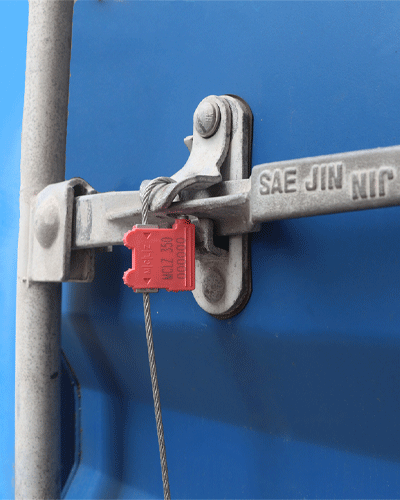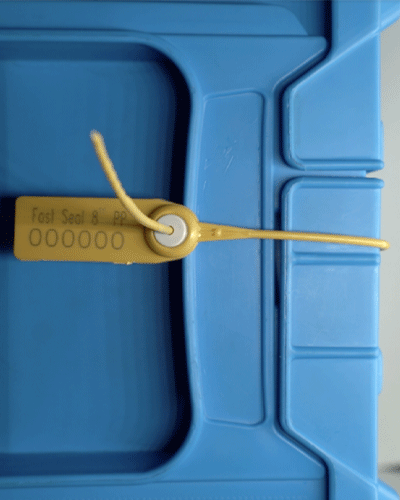




Security seals are applied to provide proof of entry. There are many types and degrees of security seals, but they are of little use if not used as an integral part of the procedures and systems established by users to apply and control security seals.
This information is intended to provide assistance to seal users, assisting them in establishing the appropriate control procedures and systems, in order to use security seals to prevent theft and robbery.
The process necessary for the proper management of security seals is shown below:

Ordering security seals, should always be the responsibility of one designated person in a company.
All orders for security seals should come from on centralized location in the company.
Seal manufacturers should ship security seals to one specific location in the company.
Security seals should be laser marked with a marking and number series unique to the company that uses the seals.
Utilizing color coding or location coding is an ideal method to identify different distribution centers or terminals of companies.
Security seals should always be kept in a secure area where only authorized personnel will have access. This will prevent fraudulent use of security seals. A log book of “seal release” must be kept.
Maintain one log book for outbound seal recording and a separate log book for inbound seal recording. The outbound security seal log book should contain the following information:
Date and time of seal application.
Trailer or container number.
Shipment destination.
Name of the employee applying the seal.
Driver identity.
If the driver is not an employee of the shipper, the application of the seal should be monitored by a representative of the shipper. The driver will print the seal marking and numbering in the bill of lading, and the shipper’s representative will sign off on the shipping document.
All seals must be applied according to the instruction of the manufacturer, and a designated employee must check the seal application. Select the most suitable security seal for the shipment, based on value, destination and other logistic factors.
The following procedures for application should be used:
i. Tractor number, company and license plate number.
ii. Trailer or container number.
iii. The seal’s number, color and coding.
iv. The driver’s identity (license number).
v. Date and time.
Want to find out more about the Seals Industry?
Learn More:
Check out our other Knowledge center pages for more information on the ins and outs of the security seal and tamper evident product market.